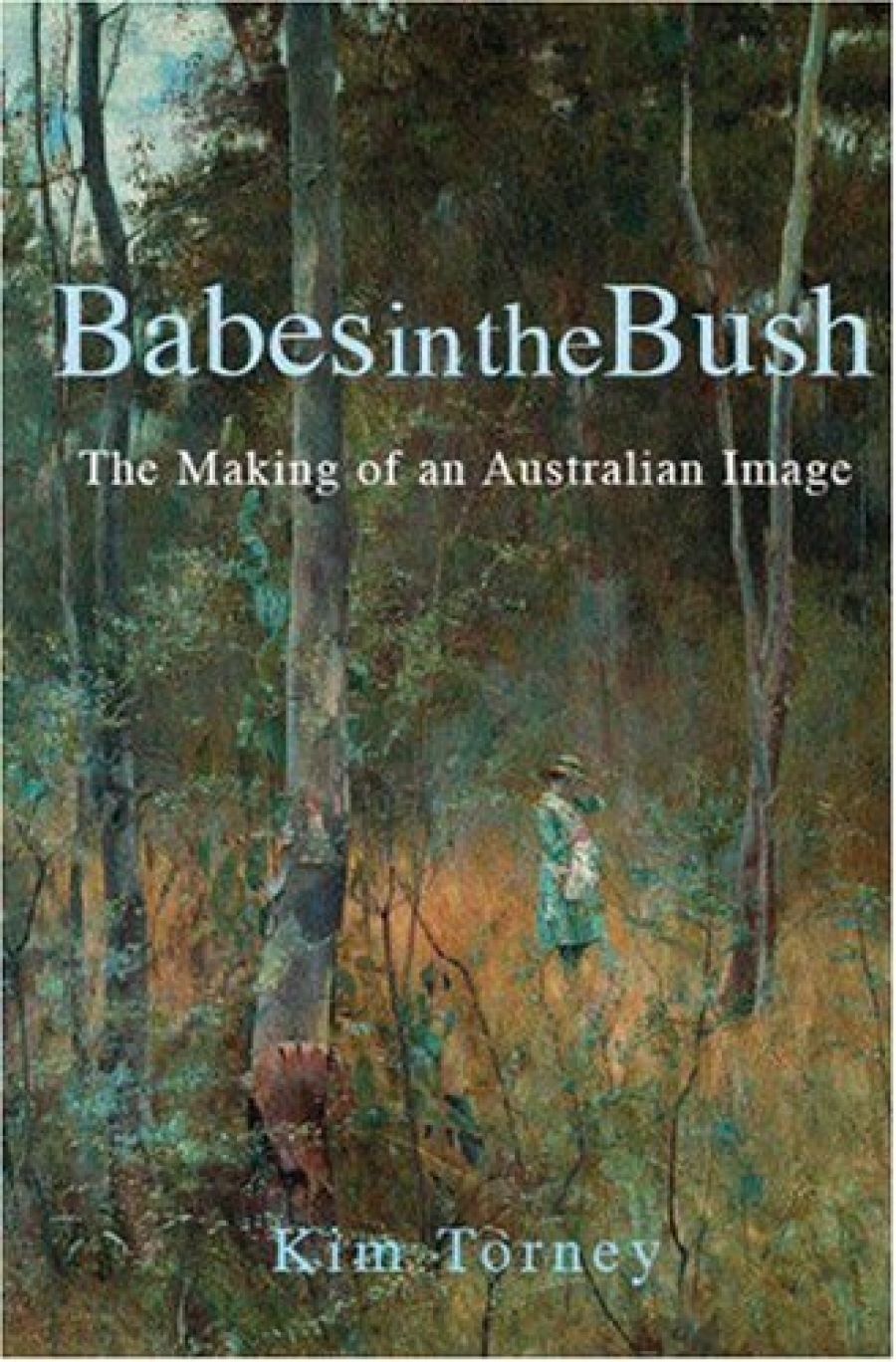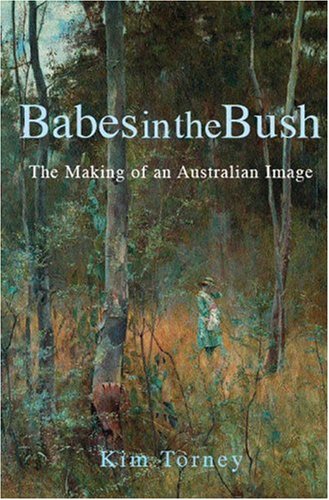
- Free Article: No
- Contents Category: Australian History
- Review Article: Yes
- Article Title: Awful ease
- Online Only: No
- Custom Highlight Text:
The central contention of Kim Torney’s Babes in the Bush: The making of an Australian image is that ‘the lost-child image continues to resonate with Australians’. The cover illustration is from Frederick McCubbin’s famous painting Lost (1886), which Torney elevates to ‘the iconic image of the lost child story’. The task set out in these assertions, and iterations of them, is to find why the image continues to resonate in Australia now that the phenomenon of children lost in the bush is such a rarity, compared with the nineteenth century. (Torney quotes the alarming statistic from the Melbourne Argus index for the 1860s of seventy children fatally lost in the bush.)
- Book 1 Title: Babes In The Bush
- Book 1 Subtitle: The making of an Australian image
- Book 1 Biblio: Curtin University Books, $35 pb, 270 pp
- Book 1 Cover Small (400 x 600):

The book’s initial approach is to seek some European origins for the figure of the lost child, in such colonial baggage for immigrants and convicts as the fairy tale of ‘Hansel and Gretel’ and the stories of ‘Babes in the Wood’, whose origins Torney pursued, on foot, to Wayland Wood in Norfolk. The contention is that Australian lost-child stories showed ‘uniqueness while claiming continuity with the “mother” culture’. But wherein was the uniqueness? Was it a matter of the landscapes in which Australian children were lost, or the number of those who met this fate? Or was it a question of what symbolic significance the lost child took on in the Australian imagination, solidified by so many actual events and by such varied artistic representations of them?
Torney reckons that, in those imaginative depictions, lost children ‘became a sacrifice to a bush which is a disturbing, inimical force’. Yet she argues that: ‘Paradoxically, children became lost because they, and often their family, felt quite at home in the bush.’ This is indeed a paradox, and it is urged in disagreement with propositions in my book, The Country of Lost Children (1999). Torney quotes my suggestion that ‘the figure of the lost child stands in part for the apprehensions of adults about having sought to settle in a place where they might never be at peace’. Having rejected this, Torney does not define clearly what lost children stand for in the national imagination, besides the terrible sorrow that their deaths and disappearances brought.
Her attempts end in contradiction. While ‘fear of the bush’ is conceded and children were lost ‘in an environment that was at least uncaring, at worst threatening’, how is it that ‘children felt comfortable in the bush’, and what is the evidence? There is plenty for Torney’s admission of the ‘awful ease with which people, particularly children, could be lost in the Australian bush’. Such ease is hardly comforting. In her conclusion, Torney reaffirms that the lost child is ‘a unique symbol of the Australian experience’. But what did it symbolise? If also ‘an integral part of the communal understanding of what it meant to be Australian’, what, more precisely, was that?
The failure to address these necessarily prompted and fundamental questions is the chief liability of Babes in the Bush. Otherwise it has rich material to offer for reflection and enlightenment. Such an enterprise as this always involves the retelling of stories, and Torney does this with flair, for instance in the case study of Louis Vieusseux, who was lost on a picnic at Ferntree Gully in 1858. She also addresses legendary episodes, notably the most assiduously remembered and memorialised: the disappearance and discovery, just in time, by a black tracker of the Duff children in the Western District of Victoria in 1864. Torney notes the ambivalence with which Aboriginal trackers were treated, how they ‘acquired a temporary high status’ and then slipped from European attention when their work was done.
Elsewhere Torney wrestles with the issue of why ‘no other settler society – not America, Canada or New Zealand’ – so explicitly displayed the fear of losing children in the wilderness. There is a long detour into the discussion of Indian captivity narratives that so marked the North American imagination but had no counterpart in Australia. Torney writes at length about such supposed captives of Aborigines as the White Woman of Gippsland, even granting her ‘a symbolic role’, presumably to do with Aboriginal sexual desire. Yet she concedes that there is not ‘one confirmed incident of this happening in Australia’.
Torney’s analysis of why memorials to lost children seem confined to Victoria is intriguing, although the Chamberlain case is interpolated into an account of the celebration of the Duffs. Lindy Chamberlain was a victim of the combination of two distinct lost-child narratives. Those of the nineteenth century have no reference to predatory animals, such as dingoes. In the twentieth century, human malice would first be suspected in the loss of children. Nonetheless, Torney has ranged with profit over a wide terrain. Babes in the Bush is expansively illustrated with familiar and surprising images. The debate over how securely we are lodged in this country – which the figure of the lost child focuses – is still urgent business for the Australian imagination and for our reckoning with the past.


Comments powered by CComment